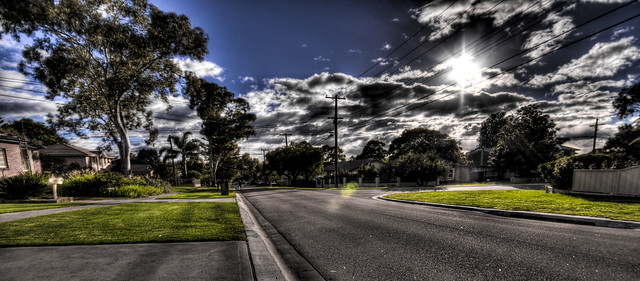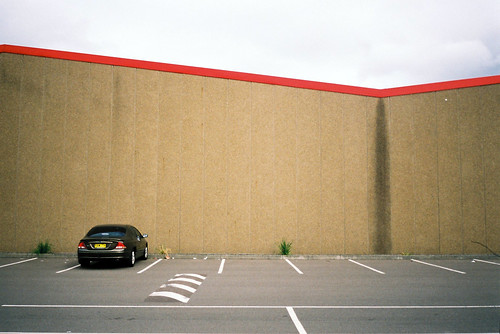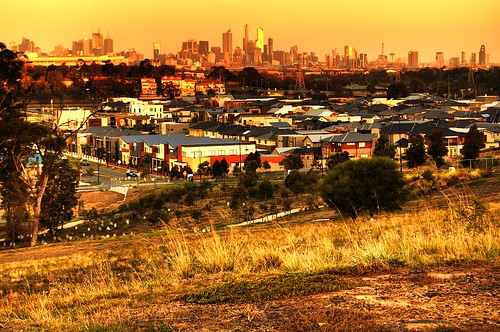The Australian Ugliness (Robin Boyd, Text, 1960/2010)

In 1960 Robin Boyd’s The Australian Ugliness became the classic treatise on the malaise of this country’s architecture and planning, offering a withering critique of all that Boyd found wanting in the Australian built form of the late 1950s. The book has now been re-issued in a handsome fiftieth-anniversary edition, with Boyd’s text bracketed between an introduction by Christos Tsiolkas and an afterword by John Denton, Phillip Goad and Geoffrey London, and its reappearance provides an interesting prompt for reflection. In the subsequent half century our cities have expanded astronomically, and no doubt there is plenty of ugliness out there in the built environment. But what kind of ugliness? Have we moved on from those trends that so bothered Boyd? And if so, have we just found newer, more effective ways to blight our landscape?
Boyd’s chief concern was with what he called Featurism, which he defines as “the subordination of the essential whole and the accentuation of selected separate features” (page 19). Much of the book is occupied with various specific examples illustrating the kind of tacked on, dinky design that Boyd has in mind. It’s an entertaining and fascinating account, capturing a vivid snapshot of a prosperous but still culturally timid post-war Australia. In the latter sections the book becomes more philosophical, as Boyd muses about universal principles of beauty and tries to delineate some aesthetic principles that might transcend the kitsch he condemns. Here Boyd is on shakier ground: it is easier to identify and condemn tacky design than to describe and codify the good design that such kitsch is allegedly freezing out. Fifty years on we have reason to be sceptical that Boyd, or anyone else for that matter, had managed to nail truly universal principles of good design.
In some respects, too, Boyd’s central concerns have fallen by the wayside in subsequent years. Perhaps the most decisive shift for the better since Boyd wrote, and one noted by both Tsiolkas in his introduction and the trio of architects in their afterword, is Australia’s increased cosmopolitanism. Boyd laments an Australia that was provincial and uncultured, describing various ocker vulgarities in extensive detail. A certain cultural cringe might linger – Boyd notes Australians’ obsession with the views of international visitors, and that hasn’t gone away – but the waves of postwar immigration, globalisation and general cultural upheaval that came during the last five decades have mostly rid us of that insularity. Similarly, a combination of the increasing complexity of our cultural influences, and a greater acceptance of global cultural exchange, means Boyd’s fretting about American influence feels dated and quaint. Boyd felt we copied the worst of American styles, but with a two year delay, but that no longer applies in an age of such widespread instant communication. This isn’t meant as criticism of Boyd, but rather an observation of how things change.
When we look at what has actually happened since Boyd wrote, we see instead a more destructive kind of globalisation: a creeping universalisation and mass production of ugliness. We still see the kitsch Boyd complained of, but it seems the least of our worries now. The ugliness we contend with today derives less from the choices of individual building designers and more with the larger scale planning practices and economic trends that have shaped the roll-out of our cities: excessive separation of uses; highway side, big box and mall-based retailing; over-engineered and car-orientated road and street design; a globalised and chain-based retail sector that erases localised difference; privatisation of public space; and so on. Subsequent polemics such as James Howard Kunstler’s classic rant The Geography of Nowhere have since catalogued those problems, and these have eclipsed the issues that pre-occupied Boyd to the point that much of what Boyd decried we would welcome now as signs of local colour and eccentricity. The very idea of a uniquely Australian ugliness has passed: when we have been struck over the head with the ugliness club, it’s the core of universal ugliness that gives weight to the blow, not the increasingly thin localised veneer.

Similarly, while time may have sidelined the central thrust of Boyd’s argument, many of his side arguments remain highly astute and relevant. The passage on Australians’ “aboraphobia” and treatment of nature in new subdivisions remains depressingly pertinent, for example. And with ongoing debate about the metropolitan plan or Melbourne, it is interesting to read his account of the side-lining of urban planning as metropolitan plans were prepared, “with gradually sagging spirits,” after World War II. Crucially, he argues that such plans “were no help against ugliness” (page 126).
He similarly notes that gifted architects will never deliver us from ugliness, since “it is not possible to imagine education ever being stepped up to the high pitch required to produce enough architects to care individually for all the houses of Australia.” The problem, he suggests, is “the lack of any consistent aesthetic appreciation or digested artistic code permeating the building classes” (page 131). This remains one of the core problems with our housing, explaining why our new estates struggle to match the design cohesiveness of those built before World War II. It is in these detailed passages that Boyd is closest to diagnosing ills that remain with us. It would have been intriguing if Denton, Goad, and London had discussed these aspects of Boyd’s discussion some more in their afterword.
In the end, the phrase “Australian Ugliness” works as something of a Rorschach test, capable of being interpreted as a reference to any kind of visual blight. As I have suggested, the central causes of ugliness that most spurred Boyd are secondary to other factors today. Ugliness seems to have fashions, just like beauty: we have adopted and cast aside some kinds of ugliness, such as quasi-Le Corbusierian wasteland modernism, in the years since World War II. That process will continue. What is distressing now is the efficiency and scale of our bad development. Yet if on some points the detail has moved on from Boyd’s argument, the prose hasn’t dated. Boyd documented the ills of his time with precision: the challenge for our generation is to see the virtues and flaws of our current built environment with something like the same clarity.

Originally published in Planning News volume 36, no. 7 (August 2011). Images by Alexander Kesselaar, Martin Hopkins, and “mugley,” used under Creative Commons Licence: click the images for more details.